11 Stunning White Flowering Plants That Will Brighten Your Garden
White flowers are the perfect addition to any garden, bringing light and beauty wherever they bloom. Their soft and delicate nature adds a touch of sophistication and charm. These flowers can create a stunning focal point or blend seamlessly into a more colorful garden. Whether you are looking for fragrant blooms or simple elegance, white flowers can meet your needs. This article will highlight some of the most gorgeous white flowers to make your garden truly special.
This post may contain affiliate links, which helps keep this content free. Please read our disclosure for more info.
White Lily (Lilium)

White lilies are known for their elegant and fragrant blooms that make any garden feel like a dream. They bloom in late spring to early summer, typically from May to July. These flowers are perfect for adding height and a touch of sophistication to your garden. They grow best in well-drained soil with plenty of sunlight, and their large, showy flowers can make a bold statement.
White lilies are easy to grow in most garden settings and can thrive in pots or garden beds. They are a great choice for both beginner and experienced gardeners. The lilies’ fragrance also attracts pollinators like bees and butterflies, making them an excellent addition for a wildlife-friendly garden. They are also available in various types, such as Oriental or Asiatic lilies, each offering unique variations.
Gardenia (Gardenia jasminoides)
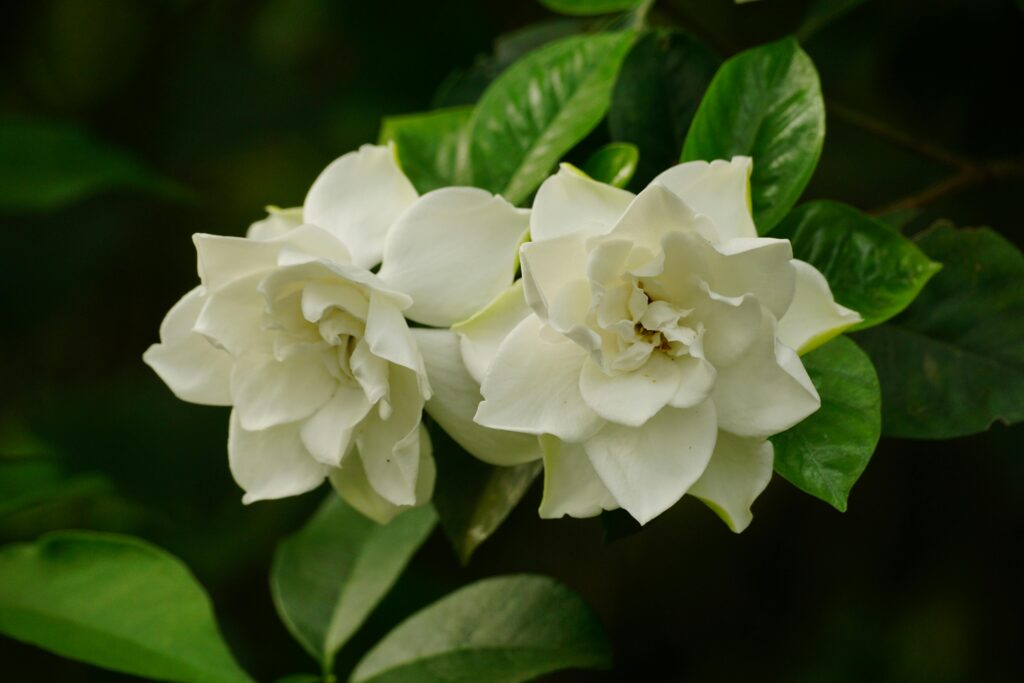
Gardenias are beloved for their creamy white flowers and intoxicating fragrance. These flowers typically bloom from late spring through summer, with the peak bloom period occurring from June to July. Gardenias thrive in warm climates and need well-drained, slightly acidic soil to flourish. Their glossy, dark green leaves provide a beautiful contrast to the pure white blooms.
These shrubs are perfect for adding a fragrant touch to your garden, making them a popular choice near patios or windows where their scent can be enjoyed. Gardenias prefer partial shade, though they will also tolerate some sun. However, they are sensitive to frost, so they should be planted in warmer regions or in pots for easy protection during colder months.
Peony (Paeonia)
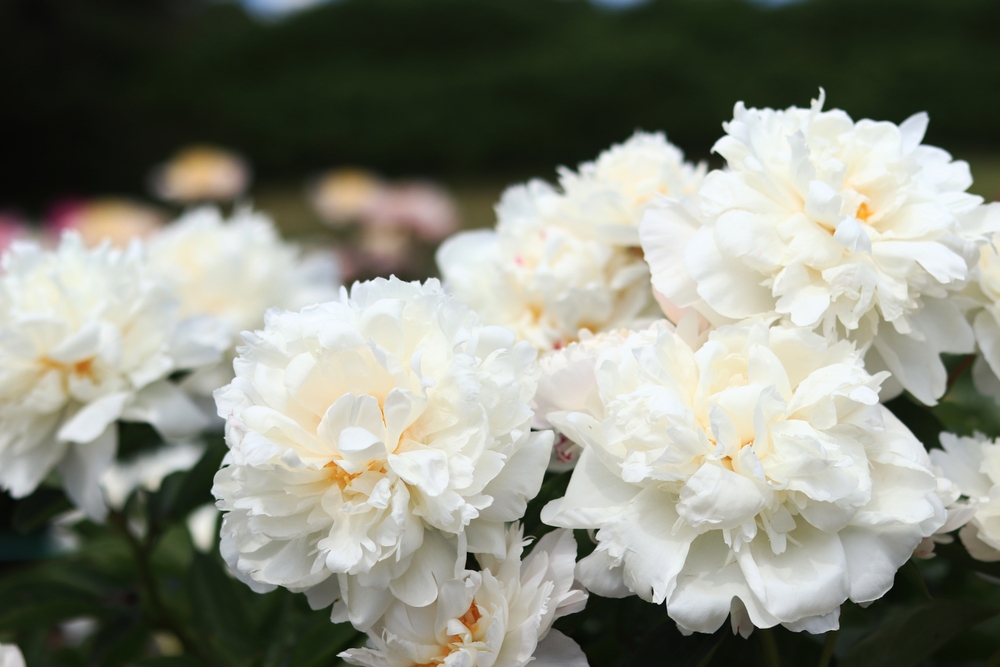
Peonies are classic flowers known for their large, fragrant white blooms. These perennial plants bloom in late spring to early summer, typically in May or June. Peonies prefer full sun and well-drained soil, making them ideal for sunny spots in your garden. Their striking flowers are often used in floral arrangements, thanks to their voluminous petals and sweet scent.
Peonies are easy to grow once established and can live for many years, making them a long-lasting addition to your garden. They benefit from regular watering but should not be overwatered, as their roots can rot. Peonies also attract pollinators like bees and butterflies, adding life to your garden while providing stunning blooms year after year.
Snowdrop (Galanthus nivalis)
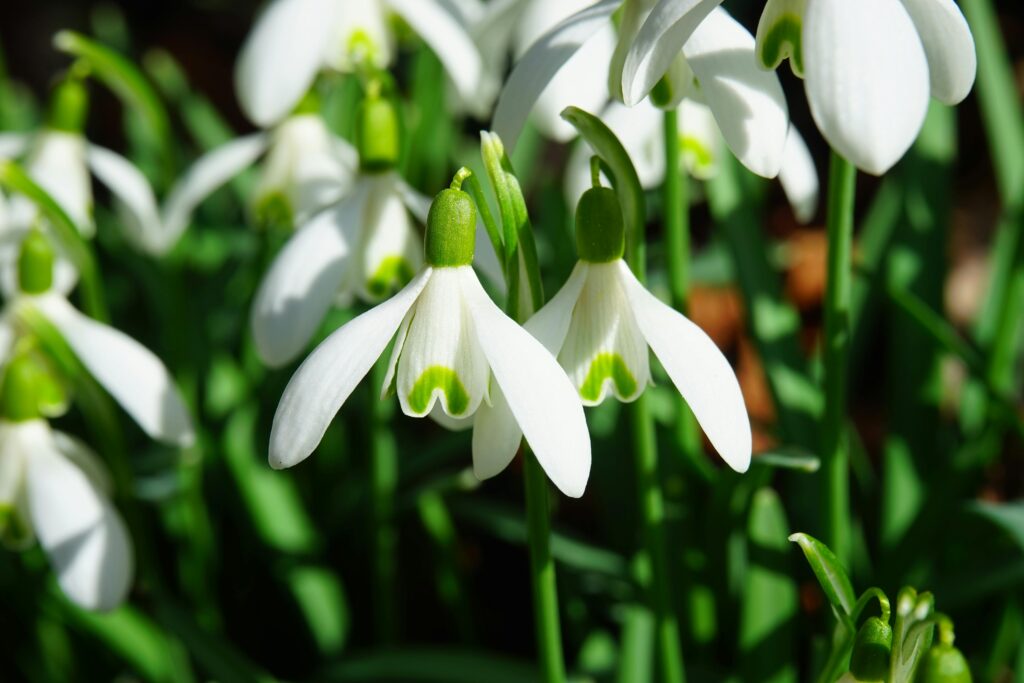
Snowdrops are among the first flowers to bloom in the garden, typically appearing in late winter or early spring, from January to March. These delicate flowers are often seen peeking through the snow, making them a symbol of new beginnings. They are small, with white, drooping flowers that resemble teardrops. Snowdrops thrive in well-drained, moist soil and are perfect for woodland gardens or shady spots.
These flowers are low-maintenance and will naturalize in the garden, spreading over time to form lovely clumps. Snowdrops can tolerate some frost, making them resilient in early spring conditions. They are also known for attracting pollinators, particularly early-season bees. Their simple beauty and early blooming make them a cherished addition to any garden.
Calla Lily (Zantedeschia)

Calla lilies are elegant flowers with smooth, trumpet-shaped blooms that come in a range of colors, including stunning white varieties. They typically bloom from late spring through summer, with the peak bloom time occurring between May and July. Calla lilies grow well in moist, well-drained soil and prefer full to partial sunlight. Their elegant, waxy white blooms make them perfect for borders, containers, or as focal points in a garden.
These flowers are relatively low-maintenance and require regular watering, especially in hot weather. Calla lilies also enjoy warm temperatures, making them ideal for warmer climates. Their striking beauty and unique shape make them a favorite in both gardens and floral arrangements. They also pair well with other summer flowers, creating a dramatic and sophisticated look.
Magnolia (Magnolia grandiflora)
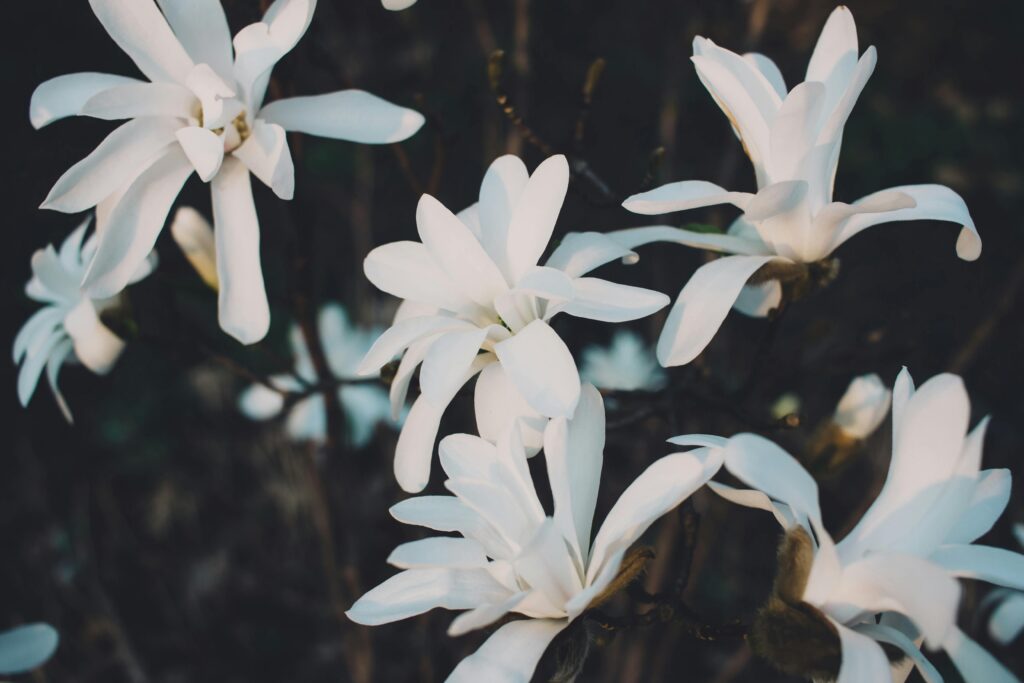
Magnolia trees are known for their large, fragrant white flowers that bloom in late spring to early summer. Typically, magnolias bloom from April to June, with their peak season being late May. These trees can grow quite large and provide impressive, glossy white flowers that stand out against their dark green leaves. Magnolias thrive in well-drained, slightly acidic soil and enjoy full sun or partial shade.
While magnolia trees need space to grow, they are long-lived and can add beauty to your landscape for many years. Their fragrant blooms attract pollinators like bees and butterflies, enhancing your garden’s wildlife appeal. Magnolias require regular watering but can tolerate some drought once established. These trees are perfect for larger gardens or as a standout feature in your yard.
White Daisy (Bellis perennis)

White daisies are simple yet striking flowers that brighten any garden. They typically bloom from early spring to early summer, usually from March to June. The classic white petals and yellow centers make them easy to identify, and they thrive in full sun. Daisies grow best in well-drained soil and can spread easily, forming beautiful ground cover in your garden.
These low-maintenance flowers are perfect for adding a cheerful touch to any garden space. They are also drought-tolerant once established, making them a great choice for low-water gardens. Daisies are often used in flower beds, borders, or as cut flowers due to their simplicity and lasting appeal. They are attractive to pollinators like bees and butterflies, making them a great addition to any pollinator-friendly garden.
Jasmine (Jasminum sambac)
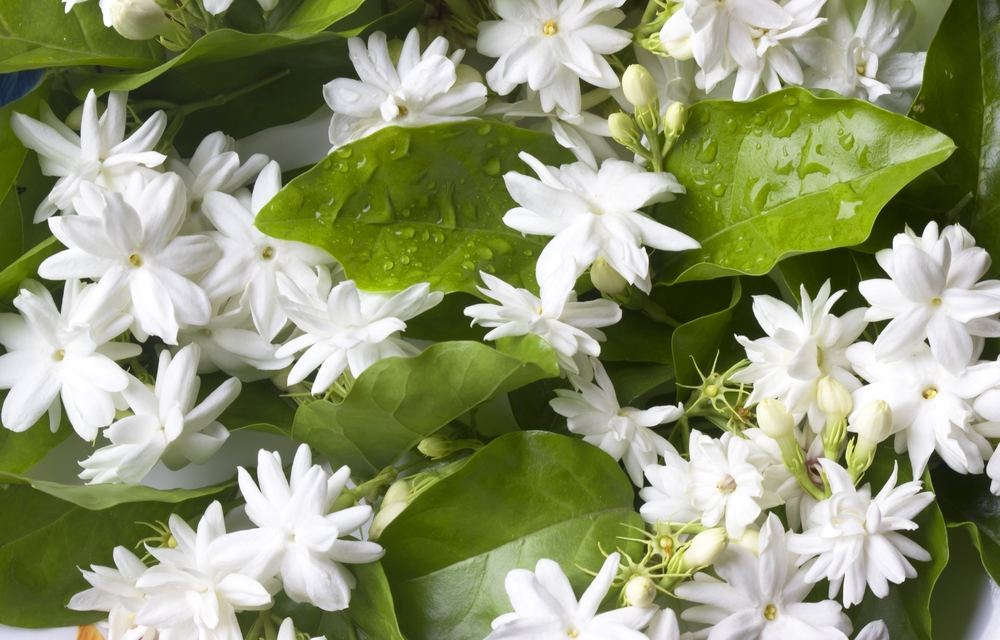
Jasmine, specifically the species Jasminum sambac, is known for its fragrant white flowers that bloom from late spring to early fall. These flowers are small, yet their sweet fragrance fills the air, making them perfect for areas where you spend time outdoors. Jasmine thrives in full sun and well-drained soil, and it is commonly grown as a vine or shrub. It is particularly known for its use in perfumes due to its rich scent.
Jasmine plants require regular watering and should be pruned to encourage healthy growth and abundant blooms. They are also fast-growing and can quickly cover trellises or fences, adding a lovely natural element to your garden. Jasmine is beloved for its ability to attract pollinators, particularly bees and moths. Its fragrant blooms make it a standout choice for anyone looking to add a sensory element to their garden.
White Tulip (Tulipa)

White tulips are a spring favorite that bring elegance and simplicity to any garden. They typically bloom in early to mid-spring, from March to May, depending on the climate. Tulips come in many colors, but the classic white variety is especially admired for its purity and clean appearance. These flowers grow best in well-drained soil and should be planted in areas with full sunlight for the best bloom.
Tulips are easy to grow and can be planted as bulbs in the fall, with flowers emerging in the spring. They are perfect for creating borders, filling gaps in flower beds, or even in containers. While they do need regular watering, tulips are fairly drought-tolerant once established. Their ability to naturalize and return year after year makes them a great choice for a lasting garden addition.
White Camellia (Camellia japonica)
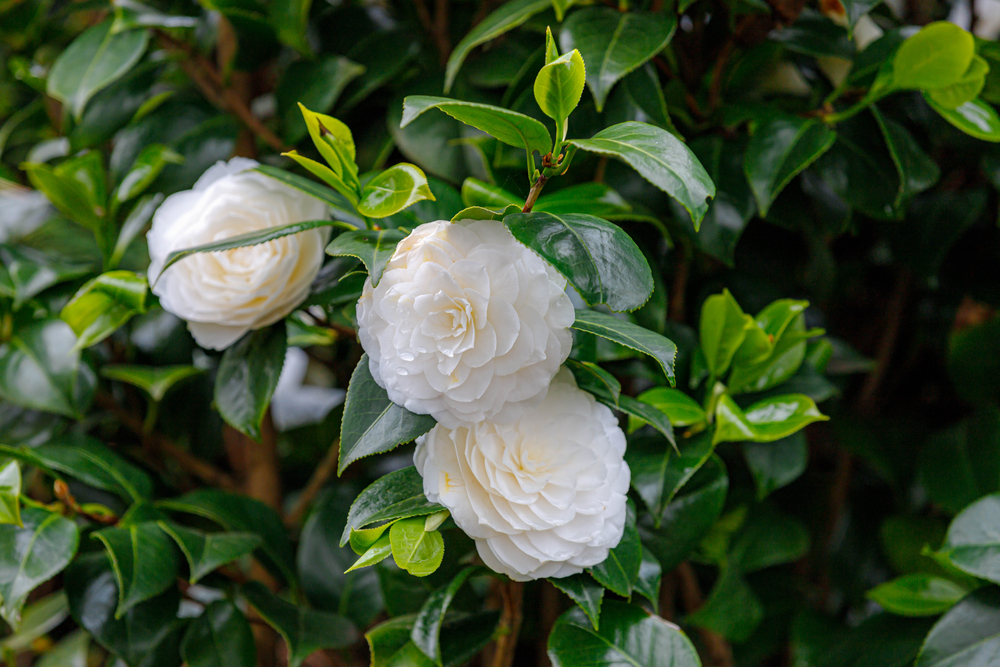
White camellias are stunning evergreen shrubs that bloom in late winter to early spring, often from January to March. Known for their large, glossy petals and striking appearance, these flowers can transform a garden into a serene paradise. They grow best in partial shade and well-drained, acidic soil. White camellias are particularly valued for their beauty and are often used as a statement piece in gardens.
These flowers are long-lasting and can bloom for several weeks, adding color to your garden when other plants are not in bloom. Camellias require regular watering but should not be overwatered, as they prefer slightly drier conditions once established. Their evergreen leaves make them an attractive feature year-round, even when not in bloom. White camellias are often used in formal gardens or as focal points in landscaping.
Jasmine Starflower (Trachelospermum jasminoides)
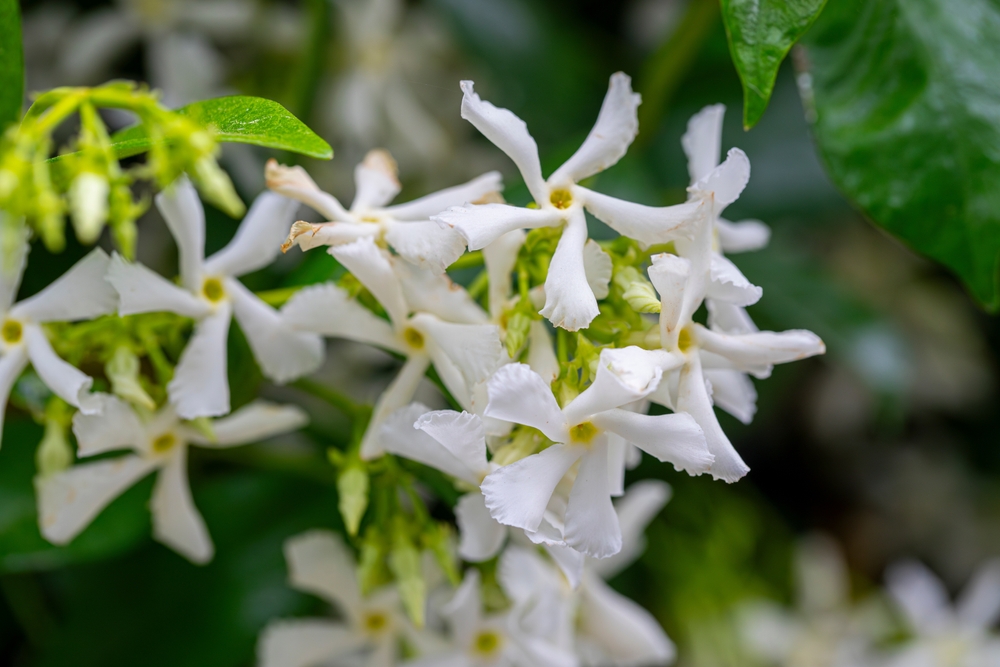
The Jasmine Starflower, also known as Star Jasmine, blooms in late spring to early summer, typically from May to June. Its star-shaped white flowers emit a sweet fragrance that adds a pleasant aroma to your garden. These vines can be trained to grow on trellises or fences, making them a great addition to vertical gardens. Jasmine Starflower thrives in full sun and well-drained soil.
This plant is easy to grow and maintain, as it is drought-tolerant once established. It can quickly cover large areas and adds a touch of elegance to any garden space. The sweet fragrance and delicate white blooms attract pollinators such as bees and butterflies. This plant is perfect for creating an enchanting, fragrant corner in your garden.
These flowers bring elegance, fragrance, and charm to any space, making them a must-have for gardeners looking to enhance their landscape. With the right care, these flowers will thrive, offering beauty throughout the seasons. A well-curated selection of white flowers can transform your garden into a peaceful retreat.
This article originally appeared on Avocadu.
